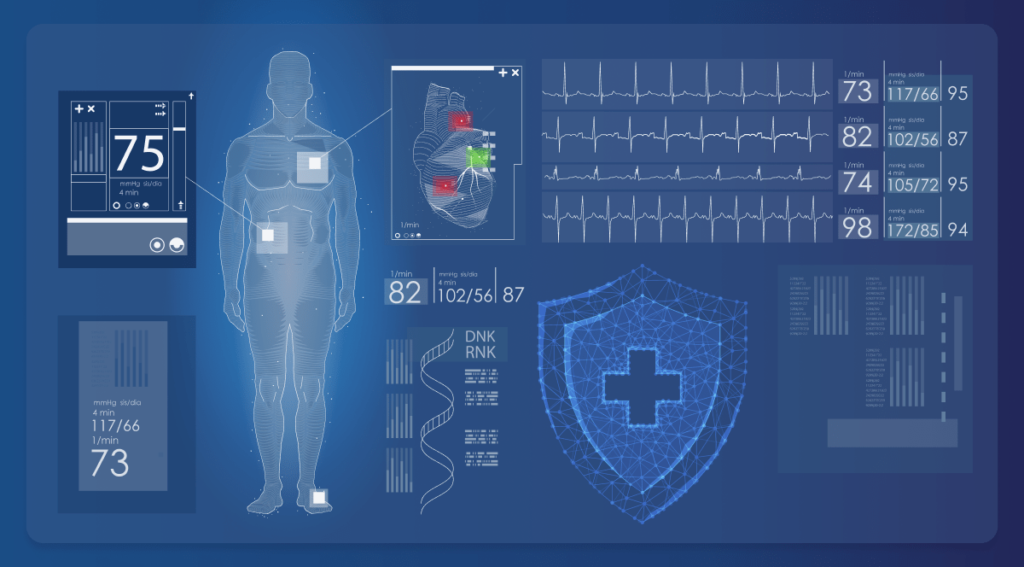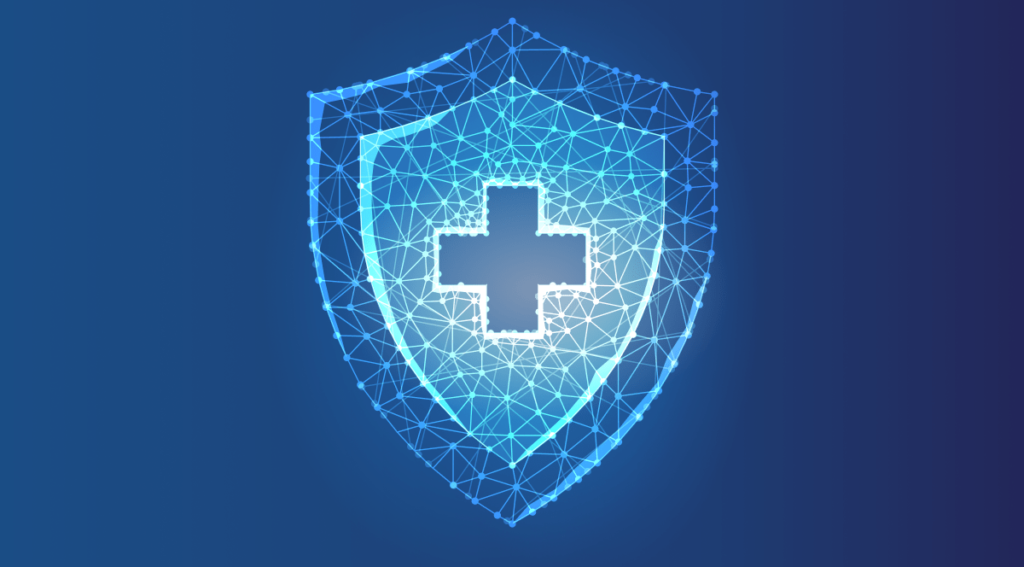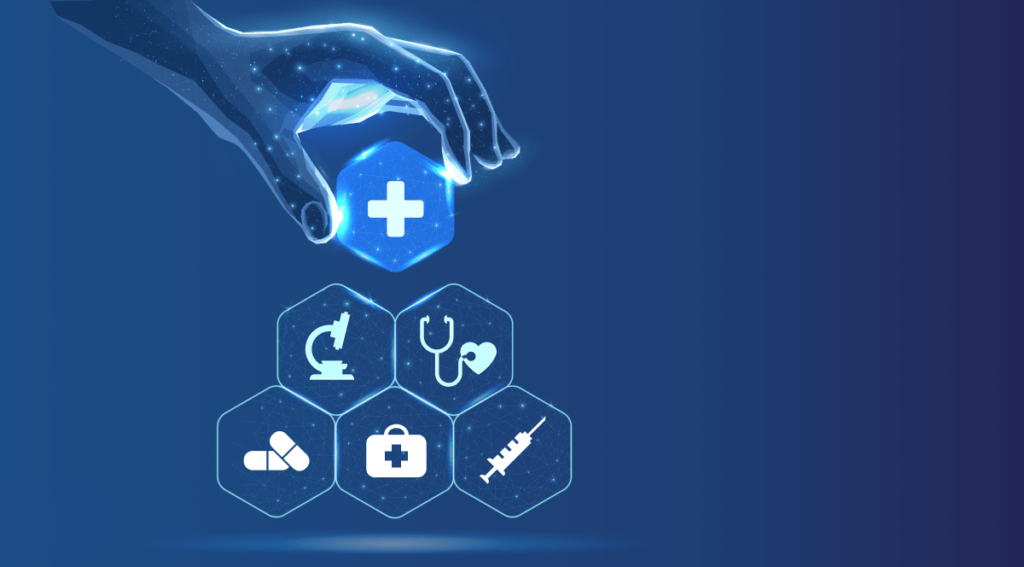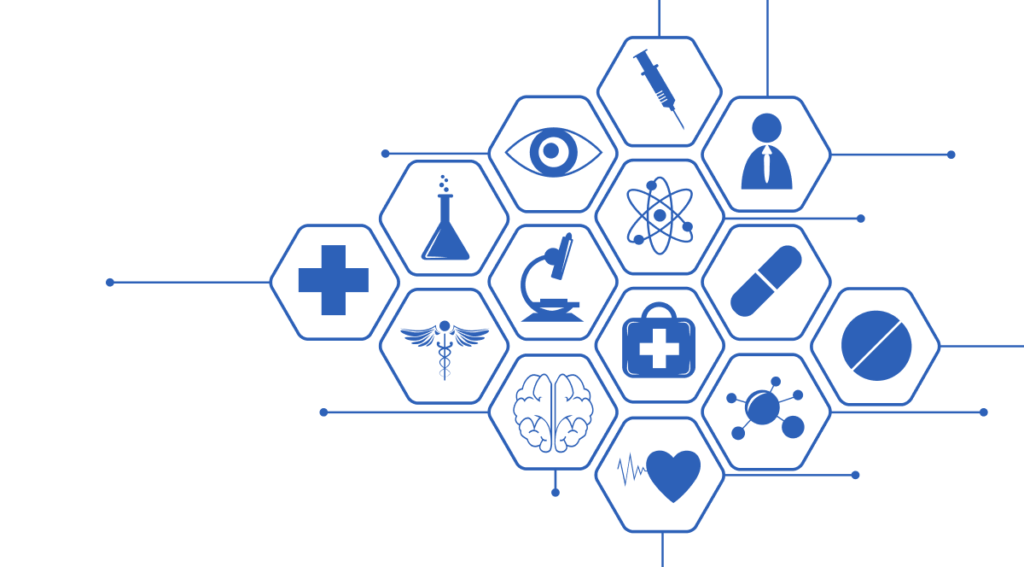Table of Contents
Recently, the healthcare sector has undergone significant changes, mainly due to COVID-19. Advanced technologies allowed us to automate many processes and bring medical care to a new level. Among these innovations are EHR systems that have become the cornerstone of patient care. According to a report by Grand View Research, the global EHR market reached $28.1 billion in 2022 and will reach $38.5 in 2030. These numbers are understandable, as these systems are valuable to physicians and individuals alike.
However, constructing a secure and reliable EHR system is not an easy task that demands careful planning and adherence to established safety standards. Thus, let’s explore how to build an EHR system that functions seamlessly, safeguards patient data, and maintains compliance with established regulations.

What is an EHR system?
An Electronic Health Record (EHR) system is a digital record of a patient’s health data accessible by authorized users within a healthcare facility. Among the EHR data are:
- Personal info;
- Insurance;
- Treatment;
- Diagnoses;
- Allergies;
- Medications;
- Immunizations, etc.
EHR systems integrate seamlessly with various healthcare settings, such as clinics and medical centers, to efficiently collect, store, and harness patient data. Doctors can leverage these systems to gain deeper insights into patients’ medical histories. It allows them to craft well-informed and precise treatment plans. EHRs are pivotal in elevating information management, optimizing internal workflows, and, ultimately, enhancing patient care.
What is the difference between an EHR and an EMR system?
An Electronic Medical Record (EMR) is also a digital version of a patient’s medical history, created and stored within a single healthcare organization or practice. They are primarily used by healthcare providers within a specific practice or facility to manage and document patient care. ERMs are designed to streamline workflows, improve accuracy, and enhance communication within the organization.
On the other hand, an EHR is a comprehensive digital record of a patient’s health information that is inclusive of data from multiple healthcare organizations. EHRs are designed to be accessible by authorized healthcare providers and organizations involved in a patient’s care, allowing for seamless sharing of information across different healthcare settings.
Thus, while EMRs focus on the specific needs of a single healthcare organization, EHRs provide a broader view of a patient’s health information across various care settings. This allows for a more holistic approach to patient care, as healthcare providers can access and contribute to the patient’s record regardless of their location or affiliation.
Types of EHR systems
With a plethora of choices available in the market, it can be challenging for healthcare providers to choose the right EHR system for their practice. The main difference between these types is where data is stored (i.e., who owns the data). There are:
- Physician-hosted: the system and data are hosted on servers situated within the healthcare provider’s premises;
- Remotely-hosted: the data is hosted on distant servers, and healthcare professionals can access it through a network connection. As EHR provider oversee infrastructure and updates, it provides flexibility but requires continuous maintenance costs;
- Cloud-based: the data is stored and handled in the cloud, allowing healthcare workers to access information from anywhere using an internet connection. Updates and system integration are automatic;
- Subsidized EHR: these systems are often subsidized or even free by the government. They meet government basic requirements, but lack advanced functionality;
- Dedicated EHR: the vendor stores data on separate servers at specific locations, and these systems are tailored for particular medical specialties, such as cardiology, and provide specialized features.
Each type has its own advantages and considerations, so it is essential for providers to carefully assess their practice’s needs, budget, and long-term goals before making a decision. Now, let’s discuss why EHR systems matter.
Benefits of EHR systems
Implementing EHR systems allows healthcare facilities to provide significant benefits to patients, including:
- Better patient care: electronic medical records allow health care providers to utilize detailed and accurate medical histories resulting in better patient care;
- Improved data availability: patients can easily view their health documents in order to stay informed about their health status and treatment;
- Enhanced communication: EHR systems enable seamless data sharing between various stakeholders and agencies, providing seamless and quick access to data;
- Convenience: patients may book appointments online or order prescriptions remotely, thus reducing the need for in-person visits;
- Improved patient safety: EHRs minimize medication errors and data duplication by giving medical workers accurate patient data, thereby reducing the risk of harm to patients.
The benefits for hospitals and medical facilities include:
- Enhanced treatment: EHR systems allow medical specialists to view extensive and current patient stores to make informed and timely care decisions;
- Reduced errors: EHRs help minimize errors in diagnosis and treatment by providing timely clinical decisions and eliminating writing mistakes;
- Data analytics: EHR systems contain data analysis and reporting tools that allow physicians to monitor patient status and take relevant action;
- Lower healthcare costs: in the long-term, EHRs can save money due to decreased paperwork, less duplicate data, and better resource management;
- Improved internal coordination: EHRs improve coordination among medical institutions and departments, making it easier to share patient data;
- Accurate data: these systems enable healthcare professionals to review a patient’s history and make necessary changes;
- Improved operational efficiency: EHRs streamline internal tasks and eliminate physical record storage, improving operational efficiency.
Challenges of EHR systems
Despite the encouraging number of benefits offered by EHR systems, all stakeholders may face challenges that they need to consider before setting up an EHR solution. Here are some of them:
- Compliance with standards: to avoid fines and ensure the privacy and security of data, EHR systems must adhere to key regulatory requirements, such as HIPAA and GDPR;
- Time-consuming training: healthcare staff must be trained to use the new EHR system effectively; it may requires additional resources, work, and time;
- Integration with legacy systems: it is often difficult and expensive to integrate a new EHR system with legacy systems;
- Poor user experience: EHRs should be easy to use, allowing clinicians to manage data efficiently. A poor user experience can make it difficult for staff to use the system and cause errors;
- Data migration issues: the migration of organizations’ data from legacy EHR systems to new or updated ones requires careful planning and execution to ensure data accuracy and safety.
Now, let’s consider the most critical aspects of the EHR system before designing it.

Compliances and certifications of an EHR system
Many regulations, laws, and rules in the healthcare industry vary from country to country. Among the main regulations related to EHR systems are:
- GDPR (General Data Protection Regulation): legal laws that set guidelines for collecting and processing personal information from individuals in the European Union;
- ONC Certification: is a program that verifies whether EHR software and systems meet specific standards and criteria established by the ONC;
- HL7 (Health Level Seven): this set of international standards guarantees data interoperability between various healthcare systems;
- IHE (Integrating the Healthcare Enterprise): this initiative aims to integrate healthcare database systems using well-established standards such as HL7 to enhance interoperability with other healthcare systems.
Non-compliance can result in financial losses, fines, and hacked systems, damaging the reputation of medical settings. HIPAA is one more mandatory standard for EHR systems.
What is HIPAA?
HIPAA, which stands for the Health Insurance Portability and Accountability Act, is a national standard in the US that was created in 1996. HIPAA is designed to safeguard and protect the privacy and security of individuals’ health information (PHI) through the following rules:
- Privacy rule: protection of health and personal data;
- Security rule: protect EHRs and ensure their security;
- Enforcement rule: outlines guidelines and fines related to HIPAA enforcement;
- Omnibus rule: a set of updates to the HIPAA regulations;
- Breach notification rule: outlines the specific requirements and timelines for reporting security incidents.
Covered entities such as clinics, private practices, individual providers, healthcare plans, clearinghouses, and insurers must comply with HIPAA requirements, focusing on a Security Rule that is highly relevant to EHR systems. The Security Rule consists of:
- Administrative safeguards: focus on the administrative aspects of security to ensure the confidentiality, integrity, and availability of protected data;
- Physical safeguards: protect the equipment, facilities, and physical media that run EHR software from unauthorized access;
- Technical safeguards: ensure that e-PHI devices are effectively protected;
- Organizational standards for Business Associates (BA): ensure that Business Associates maintain appropriate safeguards to protect patient privacy and health information security.
These rules ensure patient data privacy and security in the EHR system.
How do you make an EHR system HIPAA-compliant?
Under the above-mentioned rules, you must comply with all HIPAA regulations. To achieve this, follow these best practices:
- Conduct a risk assessment: identify and analyze possible security issues and vulnerabilities in your EHR software;
- Implement security measures: based on the risk analysis, implement appropriate security measures such as encryption, access controls, and audit logs to mitigate identified risks and protect patient data;
- Incident response plan: create a plan to notify affected parties and appropriate authorities when there is a data breach;
- Staff training staff: train all employees interacting with patient data within an EHR system. It should cover HIPAA regulations and specific policies and practices;
- Regular system review: implement mechanisms to periodically review and monitor systems to identify any unauthorized access or breaches;
- Documentation: maintain thorough documentation of your compliance efforts, including policies, rules, training records, and audit reports;
- Conduct periodic evaluations: regularly assess EHR security measures’ effectiveness and, based on these evaluations, update or improve a system.
Keep in mind that HIPAA compliance is an ongoing process that requires constant monitoring, updating, and training to adapt to changing regulations.

How to build an EHR system: the main stages
Undoubtedly, any software development is an individual process with its own set of pitfalls based on its specifications, industry needs, or desired functionality. An EHR system development is no exception; it requires careful attention to security and compliance. So, let’s look at its main stages.
Select a vendor
The first step in setting up an EHR system is finding a reliable software provider. During this process, we will consider several critical factors, including:
- Compliance with diverse regulations;
- Multi-device accessibility;
- Certificate of EHR solutions;
- Integration capabilities, etc.
Choosing the right software vendor can help ensure your EHR system’s reliability, security, and compatibility over the long term. Before you decide which provider is best for you, take the time to weigh all offered options, talk to different providers, and compare prices and services.
Validation of an idea
Once you’ve chosen a provider, the next step is to validate the main idea of EHR software development. In other words, you need to identify how well the EHR system meets real healthcare needs. The process begins with a specific concern that an EHR system can potentially solve or improve. Consultants must conduct market research to assess demand, competition, and user preferences. To test the idea, you must gather feedback from healthcare providers, administrators, and potential users.
As a result of this stage, a system idea is validated if it aligns with industry goals and requirements. After that, an EHR system development can be started.
Discovery and design
At the discovery stage, experts gather to develop a detailed EHR roadmap. This includes project goals, desired features, and functionalities, and a timeline. A roadmap helps you determine how to bring development to life. Then, a team of experts creates a prototype of an EHR system. This includes wireframing, UI and UX design, and accessibility for different systems. A prototype shows how the system will look and function and guides coding and implementation further.
Once the prototype is ready, you must create your MVP (minimum viable product) next. An MVP allows you to focus on basic features and functionality and create a solid basis for an EHR solution. An MVP also allows you to identify usability problems and areas for improvement.
Development and integration
After the prototype is approved, EHR software development is handed to the developers. The development process follows a series of sprints, each delivering ready-to-use functionality. During this phase, QAs thoroughly check each feature for possible bugs and problems. When a bug is identified, it is reported to developers for resolution. Constant interaction between developers and QA is crucial to building a reliable and well-functioning EHR solution.
During the development of an EHR system, all stakeholders should be informed and able to provide feedback. An EHR system will also be integrated with thirty-party systems during this stage. Among these integrations are Health Information Exchange (HIE), Laboratory Information System (LIS), Personal Health Record (PHR), and others relevant to particular customers.
Testing
One vital stage of EHR software development is comprehensive testing that includes functionality, usability, interoperability, compliance, and performance. Testing aims to ensure EHR security, appearance, and functionality across various platforms and networks. QAs also verify software design, oversee the entire development process, and ensure compliance with industry standards.
As we mentioned above, testing goes hand in hand with development. Before going into production, every new version of healthcare software must be tested. EHR systems are tested until they meet their outlined goals to ensure flawless operation and security.
Release and support
It is launched as soon as the EHR system has been developed and tested. This process involves selecting the appropriate deployment model (hosted on-site or in the cloud) and planning a deployment schedule that minimizes disruption to healthcare operations.
Once released, regular monitoring, support, and updates are essential to ensure its superior performance and data security. Healthcare businesses must upgrade and incorporate enhanced functionality as technology advances to maintain system reliability and relevance.
The cost of EHR system development
According to ONC, the overall cost for EHRs can vary from $15,000 to $70,000. It depends on the features and customization of an EHR system, its accessibility across various platforms, its complexity, the team’s expertise, and additional costs (licensing fees, ongoing maintenance, operating costs).
If you wonder how to create an electronic medical record system, you can choose between out-of-the-box and custom EHR software. Out-of-the-box solutions are cheaper than customized ones, and their cost depends on the functionalities and the provider. But, these types of software have limited functionality, compliance issues, and a lack of updates. Outsourcing is a popular option for creating custom EHR solutions. Typically, this type of development costs about $50 per hour. A wide range of features and functions can also influence the final cost.
Regardless of your approach, you face another significant investment. Costs differ between on-site and web-based EHR deployment (Software as a Service or SaaS). SaaS often involves a fixed monthly subscription fee, while on-site deployment necessitates ongoing expenses for maintaining on-site data servers.
It is crucial to strike the right balance between cost and quality when selecting an approach for your EHR project. Understanding the essential features and functionalities helps you initially create a minimum viable product (MVP) and keep your budget in line.
A required team to build an EHR system
Setting up an EHR system is a complex process that requires a well-organized team. The following members typically make up an EHR development team:
- Frontend developer
- Backend developers
- QA engineers
- UX/UI designers
- Product manager
- Project manager
You may have noticed that the list also includes roles that may seem similar, such as a product manager and a project manager. They differ, but both are extremely important.
Tech stack for an EHR software
When it comes to the tech stack for EHR software development, there isn’t a one-size-fits-all solution. The choice of tech stack will vary and depend on many factors, such as project goals, required functionalities, team expertise, scalability, etc. Thus, every IT company offers a diverse set of technologies that may be most suitable for one project but not suitable for another.
Furthermore, technology is always evolving, so it is important to keep up with these changes and select the suitable for your needs tech stack.
EHR system architecture
EHR system development follows the service-oriented architecture (SOA) approach. It is a design architecture where software is divided into small and independent modules or services that communicate with each other through a set of defined APIs. The architecture’s advantage is that it facilitates scalability, maintenance, fault detection, isolation, and recovery of apps. SOA typically consists of four main components:
When designing the architecture for an EHR system, the backend and frontend components play critical roles. The backend of EHR systems consists of a robust database infrastructure that ensures secure data storage and retrieval. It includes:
- Programming language
- Web frameworks and libraries
- Database server
- Web server
- Cloud servers
The frontend is the part of the EHR system that users see and interact with directly. It includes the following technologies, such as:
- A programming language
- Web frameworks and libraries
- iOS SDK
- Android SDK

Basic features for EHR software development
Each EHR solution is designed to meet healthcare providers’ individual functionalities and needs. However, most EHR systems have these basic features:
A patient portal
A patient portal is a bridge between healthcare organizations and patients, providing secure access to necessary healthcare data. Every patient in the EHR system has a profile containing extensive details such as name, age, medical history, and a unique ID (medical record number). A select number of authorized healthcare professionals can view, download, and update patient information using this number. Based on the gathered data, healthcare professionals can make informed decisions about patient treatment through a portal.
Patient-doctor collaboration
Effective patient-doctor collaboration is a paramount feature of EHR systems that patients and healthcare professionals cherish. By utilizing messaging as a user-friendly platform, patients can seek help with their health concerns and obtain reliable insights from their physicians, enhancing their healthcare experience.
Appointment reminders
Appointment reminders are a valuable feature within EHR systems that significantly helps healthcare workers maintain an organized schedule and fosters better patient-provider communication. An EHR system allows healthcare specialists to customize appointment reminders based on patient preferences. Automated notifications ensure timely communication with patients. Its benefits include:
- Improved patient attendance
- Customizable notifications
- Efficient medical workflow
- Enhanced patient experience
- Follow-up with physicians
E-prescriptions
Traditionally, patients scheduled appointments, visited the office, and received paper prescriptions. Today, this approach seems increasingly inconvenient. Instead, healthcare specialists remotely create and send prescriptions directly to pharmacies, eliminating paper prescriptions. Patients can obtain prescriptions and refill them when necessary at home.
E-prescriptions benefit both patients and healthcare settings. They reduce errors caused by illegible handwriting, provide real-time access to medication histories, and streamline medication dispensing.
Integration with test labs
By integrating EHR systems with testing labs, healthcare specialists can order, receive, and manage test results more efficiently and accurately. It reduces paper-based processes, minimizes errors, and provides quick access to vital test results, ensuring timely diagnosis and treatment. As a result, patients are better informed, and labs can enhance their internal processes.
Charting and documentation management
One of the reasons for using EHR systems is to manage large numbers of medical records efficiently. Therefore, the best way to achieve this is to use charting and documentation functions that optimize information collection, storage, and sharing. Detailed and systemized reportings allow healthcare workers to gain insight into ongoing workflows. The system should support a variety of document formats (including industry-specific formats for CT and MRI images. Healthcare organizations can adopt advanced technologies, such as AI or cloud computing, for even greater automation of clinic management.
Healthcare organizations with well-established documentation management systems improve data security and privacy, reduce paperwork, and guarantee the accuracy of compliance with regulations. It enhances the quality of healthcare services.
Role-based access control (RBAC)
Under privacy regulations like HIPAA and other secure standards, not everyone should have unrestricted access to medical-related data. Only authorized people must access it. For this purpose, an EHR system incorporates role-based access control. It is designed to ensure the security and privacy of patient data while allowing authorized users to access the necessary information. In addition, it is a convenient tool for assigning responsibilities.
For instance, doctors have comprehensive access to all patient data, while nurses are restricted to essential information. There are many ways to ensure the highest level of data access control, such as:
- Use unique identifiers
- Encryption standards support
- Emergency access options
- Multi-factor authentication
- Blocking suspicious accounts
- User action logs (injections, prescriptions, etc.)
Invoicing features
Every healthcare organization deals with bills, treatment payments, insurance companies, and other administration elements. EHR systems should incorporate features to streamline and automate financial aspects and make healthcare services less time-consuming. As a result, invoicing features optimize revenue, reduce administrative effort, and improve financial management. Users can better:
- Access and update patient insurance details
- Submit and respond to billing queries
- Transition data from patient charts to bills
- Review billing and payment history records
The foundational feature lays the groundwork for EHR software, allowing for customization and scalability based on specific healthcare needs.
Final thoughts
The question “How to create an electronic health record system” is complex and requires a well-thought-out strategy. Healthcare organizations and stakeholders must work together diligently at all stages of development. An MVP is a critical detail to ensure the development process’s long-term success. Compliance with regulations such as HIPAA and GDPR and investing in robust security measures are also important factors that need to be carefully considered.
You may also need to adopt modern technologies like cloud computing and ML to optimize your EHR systems and expand their fictionality. A reliable and secure EHR system is more than a technological solution; it is a commitment to patients’ well-being and healthcare advancement. So, if you need an experienced software partner to integrate an EHR into your organization, we can help. Get in touch with us to discuss your EHR idea.


Comments